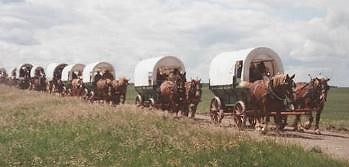
The ideal transport for most families, my mother used to say, would be two small cars that you could bolt together to make one big car when you went on holiday. I still think she’s right, and I was pondering this last week when I came up with an idea I call ‘The Digital Towbar’….
Traditionally, if you wish to take your accommodation with you on a journey, you have the option of towing a caravan, or driving a campervan/motorhome. Both of these involve compromises.
Caravan owners have a suboptimal driving experience while towing, and may have to purchase a larger and less environmentally-friendly car than they would otherwise need. They also have to fit it with a towbar and related electronics. Motorhome drivers may have an even more compromised driving experience, and their accommodation must be fitted with a large engine and a driving cab. Some drivers even tow a car behind the motorhome for use at the destination.
Now imagine an alternative model, where your electric car is equipped with the battery capacity for its own use and the necessary sensors and processing power for full autonomy, but where it can also manage a self-powered trailer that follows behind. This trailer might be half-way between an electric motorhome and a caravan; it would not need a cab for drivers, nor would it need a full range of sensors and associated processing and navigational capabilities for independent self-driving. It would maintain a fixed distance behind the car, under the control of an ‘digital towbar’, and its sensors would report back to the car’s systems through the same link. (For the moment, I assume it will be a wireless link, though there may be advantages in having some sort of lightweight physical coupling: a USB cable, perhaps, or a power lead which could balance the usage across the two sets of batteries.).
Anyway, such a trailer could combine the best bits of a caravan — a space designed for comfortable accommodation rather than for driving — with those of a motorhome — a self-powered vehicle which doesn’t require your car to be able to move a load of several tonnes. Instead of towing a little car behind your motorhome, you could tow a motorhome behind your little car. In addition, once you’ve reached your destination, decoupling the two is trivial, leaving you free to explore the local area with ease.
Cars which support the necessary protocols would not need to be fitted with any special hardware or a large engine in order to ‘tow’ such a trailer, making the loan or rental of caravans easy. There are other advantages too: the challenges that novices face when reversing a trailer could be greatly simplified by a car that understands the physics, or could do the reversing itself. The trailer could even shift around to put itself next to you in an adjacent parking space, rather than always needing to be behind.
And, of course, this model of self-powered trailers is not restricted to caravans. Small cars could now add trailers with which to tow boats, bicycles, or just general add load-carrying capacity when moving house. You could even have a separate passenger trailer in which to put noisy children while the parents travel in peace. My mother’s idea may come to fruition after all!
Finally, a single car would not necessarily be limited to towing a single trailer at once. The family of the future may once again travel as a wagon train.
Update, later This concept has already had some testing with trucks, of course, but my friend Eduardo also pointed me at this rather nice video from Hyundai! Perhaps, if you consign the kids to a rear compartment, you should assume they’ll stay there…
Recent Comments